Join us as a PhD or Master’s student
In the Centre for Advanced Instrumentation (CfAI) we develop the cutting-edge instruments that change our view of the world. As a PhD or masters student, you’ll join around 10-20 other students working with academics, engineers and research innovation associates on new exciting projects, from blue skies development to instruments for the largest telescopes in the world.
As a student we’ll train you in the skills required to excel in our program. This includes seminars on our research, machine learning and experimental skills workshops such as CAD design and optics. Our course is also designed to help you in your onward career progression post degree. You’ll be given a desk in the shared office enabling easy sharing of ideas and problem solving.
During term time we host bi-weekly seminars from external speakers giving you a link to the wider community. As part of your study, you will have the opportunity to travel, attend international conferences and meet researchers from around the world.
We have a selection of PhD projects available for an October 2026 start (listed below). In addition we support the application to scholarships. Further information regarding the application process can be found here.
Open PhD Opportunities
| Project Title | Contact | Expected Deadline |
|---|---|---|
| Learning how we walk |
15th December 2025 |
|
| Opto-mechanical design optimisation of a thermal Infrared (MWIR or LWIR) instrument |
|
|
| Atmospheric impact assessment of space activity |
15th December 2025 |
|
| Monitoring and Forecasting Atmospheric Turbulence for Astronomy, Optical Communications, and Space Situational Awareness |
|
|
| Developing Photon Counting Spectroscopy for Astronomy |
15th December 2025 |
|
| Characterising atmospheric turbulence for ground based astronomy |
15th December 2025 |
|
| Compact Terahertz Spectrometer based on Metasurfaces |
15th December 2025 |
|
| Building a High-Spectral-Resolution Spectrograph to Probe Comets and Trace the Origins of Volatiles |
15th December 2025 |
|
| Ultra High Energy Neutrino Astronomy with Trinity |
15th December 2025 |
|
| Improving the Accuracy of Drone Based Remote Sensing with Astronomical Instrumentation |
15th December 2025 |
|
| Multi-Wavelength wavefront sensing for exoplanet imaging |
15th December 2025 |
More details are given in the table below.
| Project | |
|---|---|
Learning how we walkDespite having learnt to walk upright thousands of years ago, we still do not fully understand how we use our feet to remain balanced. With 33 joints and 29 muscles our feet are incredibly complex. State-of-the-art force-sensing instruments in gait analysis (the study of how we walk) either treat the 3D forces exerted by the foot on the floor as a single point (force plate) or only assess the pressure but at different points of the foot (insoles). This inability to assess 3D foot-forces along the foot limits our insight into how our feet interact with the floor to balance ourselves. Overcoming this is vital to tackle the high incidence and impact of falls in our ageing society.
Please contact Robert Harris for further information |
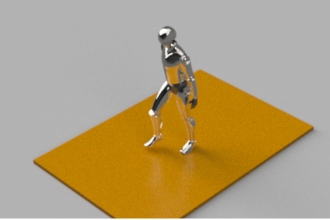 |
Opto-mechanical design optimisation of a thermal Infrared (MWIR or LWIR) instrumentMWIR (Mid-Wave Infrared) and LWIR (Long-Wave Infrared) instruments on satellite platforms are essential tools for monitoring land and sea surface temperatures globally, providing critical data for understanding climate patterns and weather forecasting. With multispectral capabilities, they also assist in identifying and tracking greenhouse gases such as SO2, CO2 and CH4 through their thermal signatures and contribute to mapping air quality and pollutant distribution.
Fully funded Please contact Cyril Bourgenot for further information |
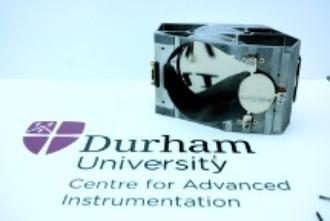 |
Atmospheric impact assessment of space activityAs of August 2025, over 12,600 active satellites orbit Earth, doubling since 2022. Expectations are for satellite populations to rise to 20-30,000 by 2030 and as many as 100,000 by 2050. Much of this growth is derived from the expansion of so-called mega-constellations, large networks of satellites delivering communications and other services around the world. Unlike traditional missions with long operational lifespans, these constellations introduce a high-throughput cycle of satellites entering and exiting the orbital environment to maintain network integrity and upgrade technology. Currently, 1 or 2 tracked objects re-enter the Earth’s atmosphere every day, with this number set to increase significantly over the next decade. These launches and re-entries release soot and metallic particulates (e.g. aluminium oxide) into the upper atmosphere. These particles may influence climate dynamics by forming stratospheric clouds and accelerating ozone depletion, increasing UV exposure risks. Current data is sparse, relying on costly, infrequent (currently discontinued) missions (e.g. NOAA aircraft). Without long-term and scalable monitoring, climate models and policy decisions lack a reliable evidence base.
This programme will develop proof-of-concept technology demonstrators focused on one or both of the following approaches: 1. Develop and test a portable multi-spectral imaging/spectrographic systems capable of monitoring re-entry events in real time. These instruments will help determine the physical processes occurring during re-entry—specifically whether objects ablate, melt, or fragment, and how these behaviours vary with trajectory, composition, and structural design. 2. Balloon-borne sample return missions to collect and characterise particulates in the upper atmosphere, providing direct evidence of their physical and chemical properties.
The specific focus will be tailored to the candidate’s background and interests, with flexibility to pursue either a single approach in depth or a comparative study across both. The project will include design, prototyping, and field validation phases.
This project is conducted in partnership with the University of Auckland, New Zealand, offering a unique opportunity to test instrumentation and collect data across both hemispheres. The collaboration supports joint field campaigns, shared access to facilities, and integration with complementary research in atmospheric science and space sustainability.
Please contact James Osborn for more information |
PhD students observing a satellite from La Palma, Spain. |
Monitoring and Forecasting Atmospheric Turbulence for Astronomy, Optical Communications, and Space Situational AwarenessAtmospheric turbulence is a critical limiting factor for ground-based optical systems, affecting image resolution in astronomy, signal fidelity in free-space optical communications, and tracking accuracy in space situational awareness (SSA). This PhD project aims to develop and apply advanced turbulence monitoring and forecasting tools to support these three domains, enhancing the performance and reliability of ground-based optical systems.
Research Objectives:
Impact and Applications: This project will contribute to:
The student will join CfAI’s vibrant research environment, working alongside experts in adaptive optics, space instrumentation, and atmospheric physics. The project offers opportunities for international collaboration, fieldwork, and cross-sector impact.
Please contact James Osborn for more information |
Top: PhD student developing and testing atmospheric optical turbulence instrumentation on La Palma, Spain. Bottom: State of the Art turbulence forecast model developed at Durham. The colour indicates the strength of the atmospheric optical turbulence in units of the refractive index structure constant. |
Developing Photon Counting Spectroscopy for AstronomyMany of the most important discoveries in astronomy over the last decades have been driven by technological advances that have enabled researchers to open up new avenues of research. This includes advances in telescope design, such as with the upcoming Extremely Large Telescope (ELT), modes of operation such as Adaptive Optics and perhaps most importantly, through developments in the detector technologies used, such as moving from photographic plates to electronic imaging.
At Durham, we are part of a world-leading collaboration to develop and exploit Kinetic Inductance Detectors (KIDs) for optical and near-infrared astronomy. KIDs could potentially drive the next revolution in astronomy as they enable incredibly sensitive 3D spectroscopy by counting individual photons. They are made from super-conducting materials that use the kinetic inductance effect to measure the energy of a photon (to better than 10%) and its arrival time to better than 1 microsecond. By making arrays of 1000’s of such detectors, we are able to open areas of research impossible with other technologies.
One such area is the field of time domain astronomy, this growing field includes the observations of the compact binary precursors of gravitational wave sources and the transiting exoplanets, among others. These objects show variability on timescales of milliseconds to hours and you will observe this variability spectroscopically to determine the fundamental properties of such systems.
This project represents an exciting opportunity to join our team of students a post-docs and be involved in a novel instrumentation project from an early stage. We are looking for a highly motivated student to work on instrument development in the Centre for Advanced Instrumentation. No prior knowledge of KIDs is expected and all necessary training will be given. The project would suit students interested in experimental physics from a wide range of backgrounds, including astronomy, low temperature physics, optics, and superconductivity. Projects will include some observational astronomy alongside the instrument development.
Please contact Kieran O'brien for more information |
Left: Microscope image (∼ 0.3 × 0.5mm) of pixels in a KID array, from Mazin Lab website. Centre and Right: photo of the KID development lab at Durham University. |
Characterising atmospheric turbulence for ground based astronomyThe aim of this studentship is to develop new concepts and technology to characterise the effects of atmospheric turbulence for astronomy. The optical effects of atmospheric turbulence, known as ‘seeing’, are a major limitation for ground based optical astronomy. Seeing degrades the image resolution that can be achieved with large telescopes and adds noise to photometric
The student will join the dynamic environment of the Centre for Advanced Instrumentation (CfAI), within the Physics Department at Durham University. The CfAI is a world leading research centre with a large and successful Astronomical Instrumentation group, including Adaptive Optics and Space Science technologies. CfAI has extensive experience in analysing atmospheric turbulence and the use of computer modelling of complex optical systems to design optical instrumentation for some of the world’s premier astronomical observatories.
Please contact Richard Wilson for more information. |
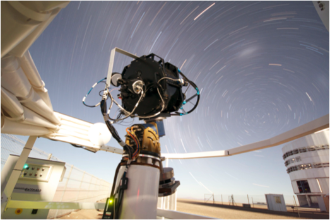 |
Compact Terahertz Spectrometer based on MetasurfacesTerahertz (THz) spectroscopy holds significant importance owing to the abundance of molecular and atomic fingerprint lines within this frequency range. In astronomy, THz spectroscopy provides a powerful probe of rotational and vibrational transitions of molecules, offering insights into star and planet formation as well as the physical and chemical processes in galactic and interstellar environments.
Conventional THz spectrometers typically rely on multiple free-space optical elements or moving parts, which makes them bulky and challenge to integrate into compact systems. Metasurfaces - planar optical components composed of subwavelength nanostructures, have recently emerged as a powerful new approach for controlling the polarization, phase, and amplitude of light with unprecedented flexibility. These advances open the door to the design of highly compact and versatile spectroscopic instruments.
This PhD project will focus on the development of a proof-of-concept compact THz spectrometer based on metasurfaces. The project will span scales from designing and optimizing nanophotonics to integrating and characterizing a full spectrometer system. We are seeking a motivated candidate with a strong interest in experimental physics. Applicants from broad backgrounds, including astronomy, optics, electrical engineering are encouraged to apply.
For more information, please contact: Yuan Ren |
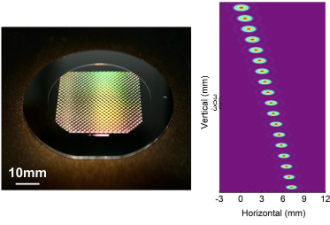 |
Building a High-Spectral-Resolution Spectrograph to Probe Comets and Trace the Origins of VolatilesThe processes behind the formation of planetary systems, their evolution, and their ability to support life remain some of the most profound and unresolved questions in astronomy. Investigating these phenomena is a major scientific challenge, and interplanetary objects such as comets serve as critical windows into the early stages of planetary development. Their icy cores preserve essential clues about the environments in which the first planets formed, offering valuable insights into the history of the solar system.
Isotopic ratios - the relative abundances of isotopes of a given element - are particularly powerful for probing the formation and evolutionary history of cometary materials. These ratios provide direct information about the processes and environments that shaped the early solar system and are key to tracing the origins of volatiles in comets. To quantify isotopic ratios with a strong signal, a high-resolution spectrograph in orbit is required.
This PhD project aims to explore early designs and prototypes of a VIPA-based Isotope Ratio Spectrograph (VIPAIRS): a compact, high-resolution spectrometer (R > 100,000) capable of measuring isotopic signatures for the first time. Other applications, such as probing atmospheric trace gases (e.g., O₂, CO₂), will also be investigated. Research Objectives
The student will join CfAI’s research environment, working alongside experts in adaptive optics, space instrumentation, and atmospheric physics. The project will involve travel between the two CfAI sites: The Ogden Centre on Durham campus and the NETPark Research Institute in Sedgefield (20 minutes by bus from Durham city).
For more information, please contact: Cyril Bourgenot |
 |
Ultra High Energy Neutrino Astronomy with TrinityThe Trinity telescope is a new and unique approach to observing the neutrino Universe. Trinity will
For more information, please contact: Anthony Brown |
Images outlining key aspects of the position. Top: schematic outlining key components of Trinity’s |
Improving the Accuracy of Drone Based Remote Sensing with Astronomical Instrumentation
The recent advances in UAV capability has given the remote sensing community a number of exciting
This PhD position will look to combine astronomical instrumentation, UAV technology and machine For more information, please contact: Anthony Brown |
Top: image of UAV-based calibration system above a telescope array in Namibia. Bottom: UAV imagery of a wheat field with different pathogens |
Multi-Wavelength wavefront sensing for exoplanet imagingMost large telescopes make use of adaptive optics to overcome the blurring effects of atmospheric turbulence, allowing observations of the universe with exquisite spatial resolution. Adaptive optics observations have unlocked new science over the last two decades, enabling the characterisation of high-redshift galaxy kinematics, confirmed the existence of the super massive black hole at the center of our galaxy (winning the 2020 Nobel prize in Physics), and taking direct images of gas giants orbiting other stars. The next generation of extremely large telescopes with 30+ meter diameter primary mirrors coming online in the next decade and these telescopes all use adaptive optics. One of the driving science goals for these telescopes is to image exoplanets and characterise their surfaces and atmospheres. To meet this ambitious challenge we require research into new techniques,
One of the key pieces of technology within an adaptive optics system is the wavefront sensor, which measures the
The goal of this project will be to develop an instrument that will provide the first on-sky demonstration of a multiwavelength Pyramid wavefront sensor. The instrument will be installed on a 2-meter diameter telescope in Asiago (Italy) where an international team of young adaptive optics researchers and students are working on the development of a new adaptive optics testbed. No experience of optical instrumentation development is required for this PhD but you will need to have an interest in experimental physics and be willing to learn a wide range of transferrable skills such as optical design, data reduction, and adaptive optics simulation development. This is a rare opportunity to undertake research and development of a new technology and test it at a telescope. A successful demonstration of this technology in the next few years could result in it being adopted for use in the next generation of planet characterising instruments.
For more information, please contact: Tim Morris |
|


/prod01/prodbucket01/media/durham-university/departments-/physics/cfai/CfAI-Webpage-Banner-smaller.jpg)

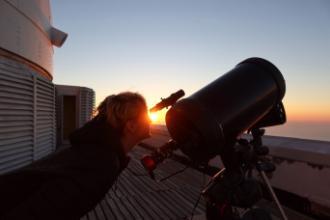
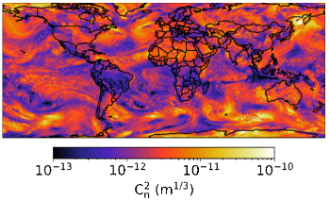
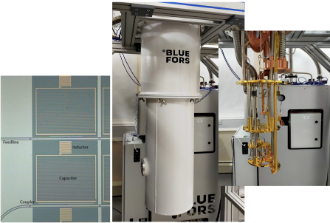
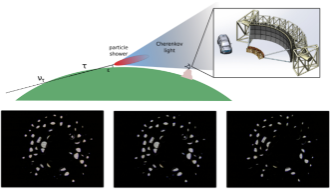
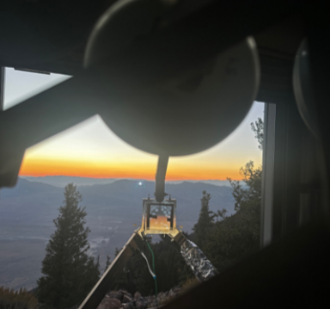
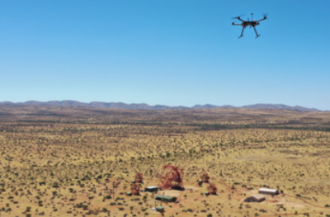
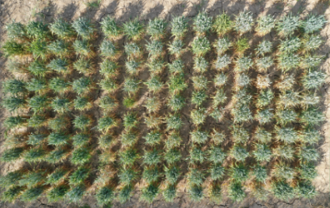
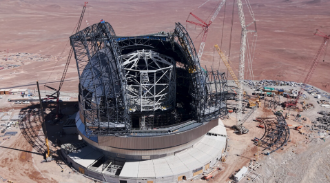 Image of the 39m Extremely Large Telescope under construction in Chile. Image ©European Southern Observatory
Image of the 39m Extremely Large Telescope under construction in Chile. Image ©European Southern Observatory/prod01/prodbucket01/media/durham-university/departments-/physics/cfai/telescopes-and-instrumentation/DSC03032.jpeg)
/prod01/prodbucket01/media/durham-university/departments-/physics/cfai/telescopes-and-instrumentation/DSC09601.jpeg)
/prod01/prodbucket01/media/durham-university/departments-/physics/cfai/telescopes-and-instrumentation/BDUA5729.1.jpeg)
/prod01/prodbucket01/media/durham-university/departments-/physics/buildings/VT2A9935.jpg)